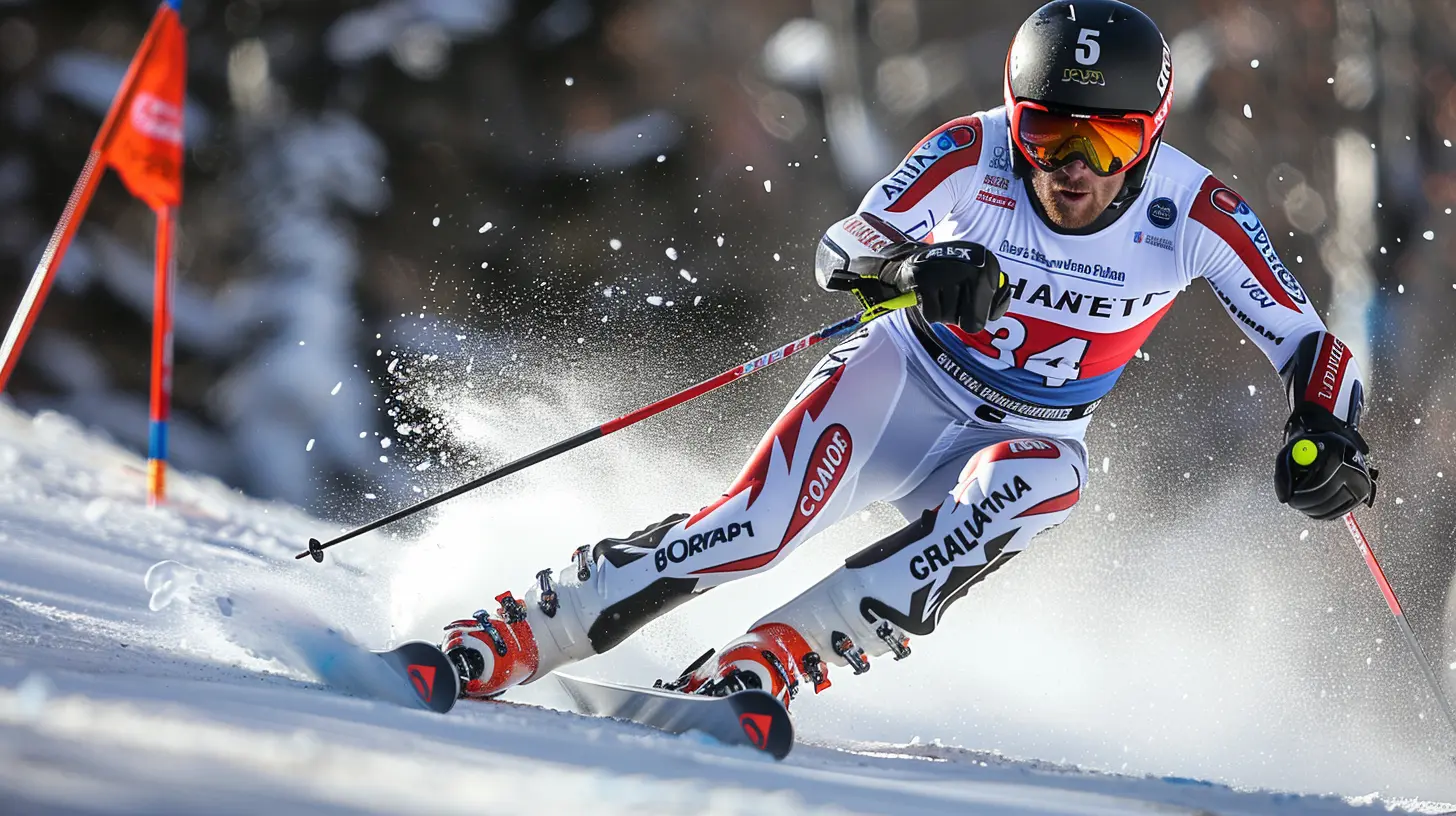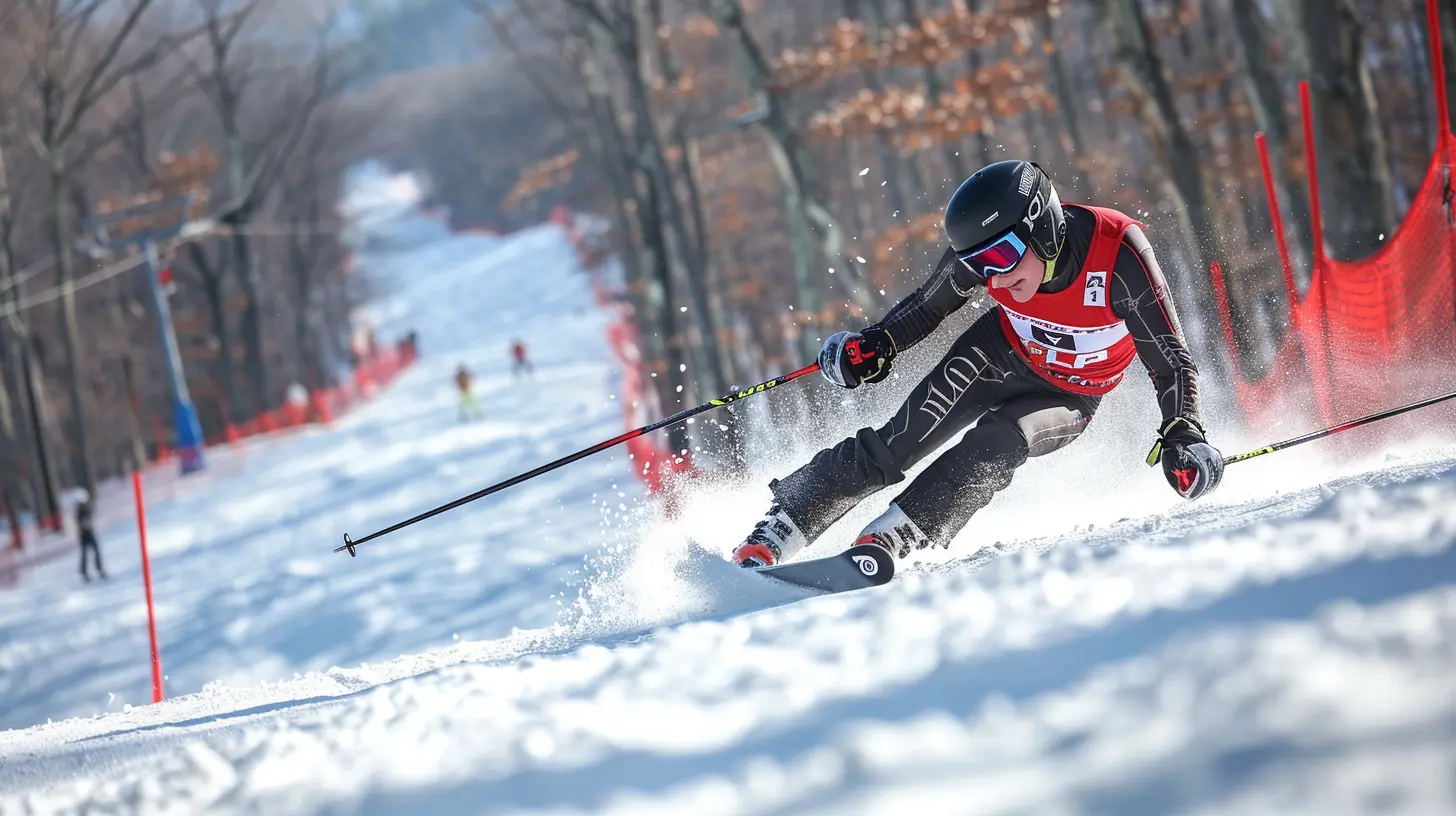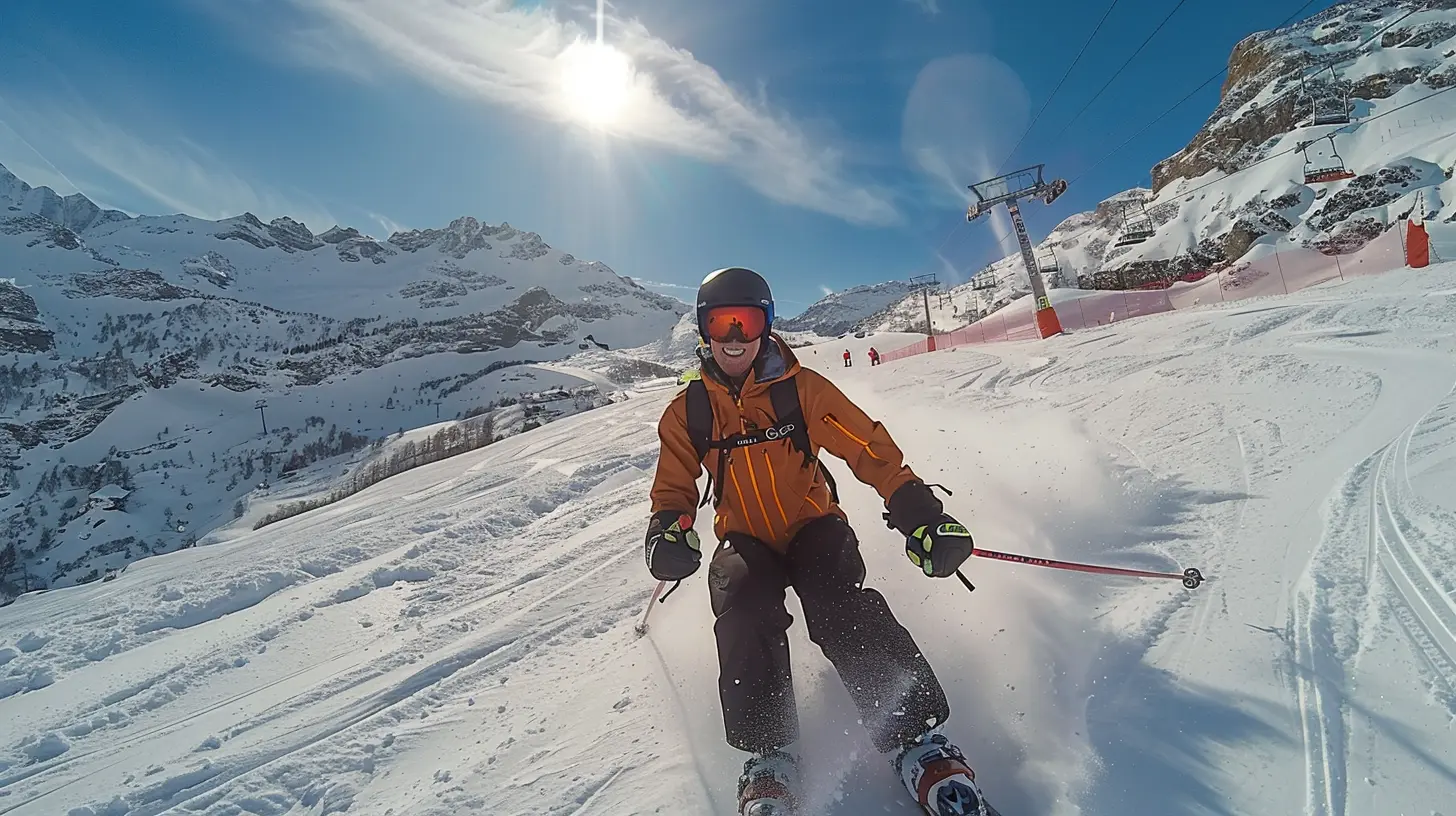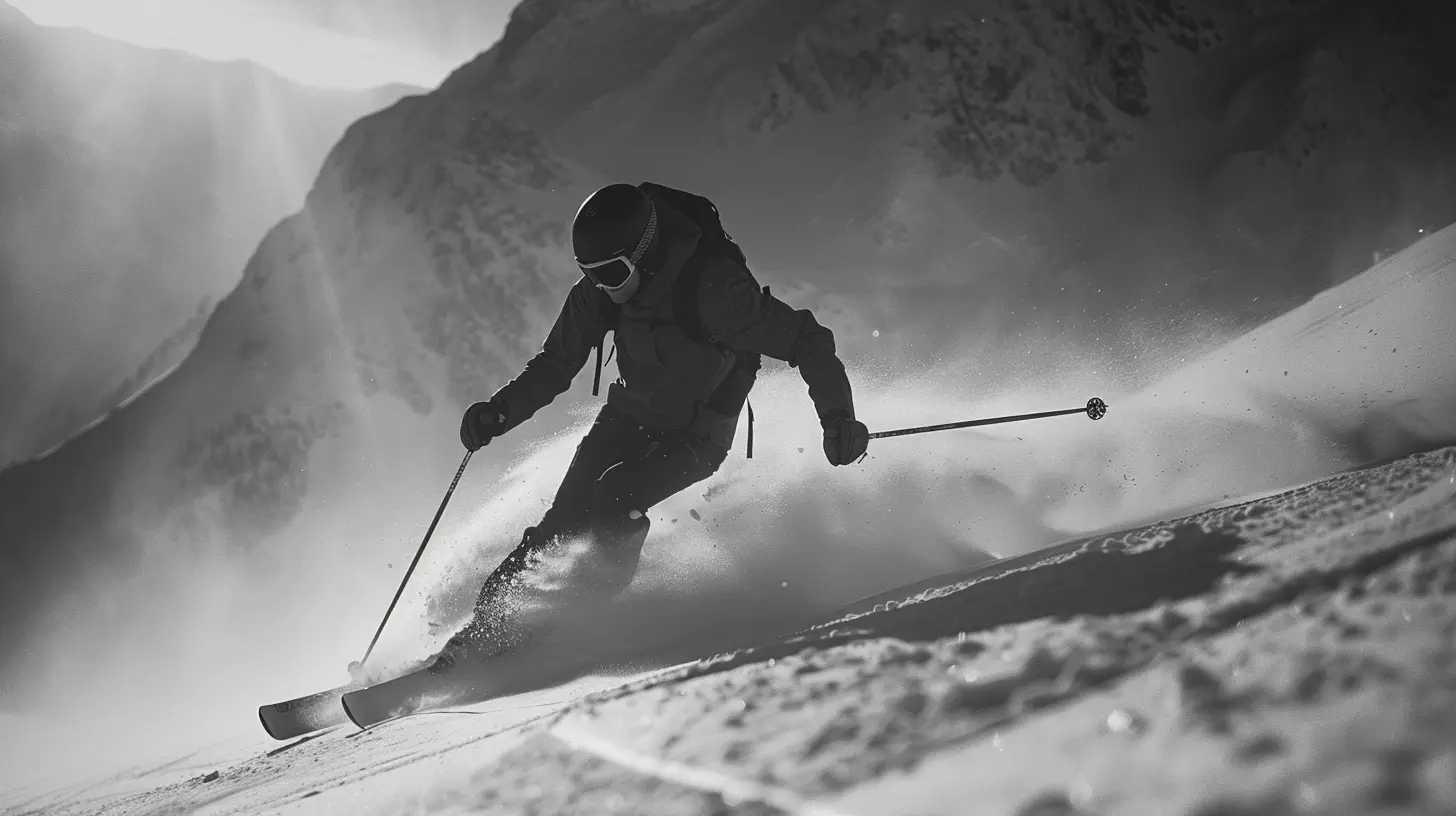Improving Your Parallel Turns: Drills for Precision and Control
23 November 2024
If you're serious about skiing, you’ve probably heard the term "parallel turns" thrown around quite a bit. It’s that elusive skill that separates casual skiers from the pros, allowing you to glide down the slopes with elegance and control, making you feel like you're dancing on the snow. But let's be honest, mastering parallel turns can sometimes feel like wrestling with a wild animal—frustrating and unpredictable.
The good news? With the right drills and techniques, you can tame that beast and carve your way down the mountain with precision and confidence. Whether you're a beginner just transitioning from snowplow turns or an intermediate skier looking to refine your skills, we’ve got you covered. Let's dive into some drills and tips that can help you improve your parallel turns and make you feel like a slope-slaying rockstar.

Why Focus on Parallel Turns?
Before we jump into the drills, let’s talk about why parallel turns are so important in your skiing journey. Parallel turns are a game-changer because they allow for smoother, more efficient skiing. When done correctly, they give you greater control over your speed and direction, making it easier to navigate tricky terrains or avoid obstacles. Plus, they just look and feel cool, right?More importantly, parallel turns are foundational for more advanced skiing techniques. Whether you're aiming to master moguls, carve down steeper slopes, or simply ski with more speed, solid parallel turning is the key to unlocking all these skills.

Common Mistakes in Parallel Turns
Before we get into the nitty-gritty of drills, let’s tackle some common mistakes that prevent skiers from achieving smooth parallel turns:- Leaning back: This is perhaps the most common mistake. When you lean back, you lose control of your skis and struggle to initiate turns.
- Over-rotating the upper body: Your shoulders and upper body should stay relatively stable. Over-rotating can throw off your balance.
- Not trusting the edges: Many skiers don’t commit fully to their ski edges, resulting in skidding or sloppy turns.
- Rushing the turn: Patience is key. Many people rush through the turn, missing out on the subtle control that comes from a well-executed edge change.
Now that we’ve identified some common pitfalls, let’s work on fixing them with some focused drills!

Drills to Improve Your Parallel Turns
1. The Edge Control Drill
Let’s start with the basics. Edge control is the foundation of parallel turns. If you can’t control your ski edges, your turns will feel sloppy and unpredictable. This drill will help you get comfortable with using the edges of your skis for better stability and control.How to Do It:
1. Find a relatively flat or easy slope to practice on.2. As you descend, focus on shifting your weight from the inside edge of one ski to the inside edge of the other.
3. Make small, controlled turns, focusing on the sensation of your ski edges gripping the snow.
4. Gradually increase the size of your turns as you gain confidence.
The Goal:
Feel the bite of your edges as you turn. This drill will help you understand the role your ski edges play in initiating and controlling your turns. Mastering edge control will give you more confidence to tackle steeper or icier slopes where precision is key.2. The Pole Plant Drill
The pole plant is often overlooked, but it’s a crucial part of parallel skiing. Properly timed pole plants give you rhythm and help you initiate your turns with more finesse. Think of it as the metronome for your turns, keeping things in sync.How to Do It:
1. Start on an easy blue run where you can focus on technique.2. As you start your turn, plant the pole on the downhill side.
3. The pole plant should happen just before you begin the edge change.
4. Practice this rhythmically—turn, plant, turn, plant—letting it guide you through each turn.
The Goal:
The pole plant gives your upper body stability and helps you initiate your turns with a bit more confidence. It’s not just there for decoration—it’s your timing tool! Mastering the pole plant can take your parallel turns from shaky to sharp.3. The Shuffle Turns Drill
If you find that your skis aren’t quite staying parallel during turns, shuffle turns are a great way to work on keeping them in sync. This drill forces you to focus on your footwork while maintaining balance.How to Do It:
1. Start on a gentle slope.2. As you initiate a turn, shuffle your feet back and forth (one ski slightly forward, then the other).
3. Keep your skis parallel as you shuffle and turn.
4. Once you’ve completed the turn, repeat the process in the opposite direction.
The Goal:
This drill will help you maintain proper ski alignment and balance while turning. The shuffling motion forces you to engage your core and legs, promoting better control over your skis.4. The Javelin Turn Drill
Another favorite for improving balance and coordination is the javelin turn drill. It’s a bit more advanced, but it’s incredibly effective for refining your parallel turns. Plus, it looks cool!How to Do It:
1. As you turn to the left, lift your inside ski (right ski) and point it across your outside ski (left ski), like you're throwing a javelin.2. Hold this position as you complete the turn, then switch sides.
3. Focus on keeping your body centered and balanced as you lift the inside ski.
4. Keep your upper body stable and avoid twisting.
The Goal:
This drill hones your balance and forces you to engage your lower body while keeping your skis parallel. It’s an excellent way to fine-tune your turning mechanics and develop greater control over your skis.5. The Hockey Stop Drill
If you’ve ever watched a hockey player come to a screeching stop on the ice, you've probably seen the skiing equivalent of a hockey stop. This drill helps you practice quick edge engagement, which is crucial for precise parallel turns.How to Do It:
1. Start on a relatively flat slope.2. As you descend, pick up a little speed and then initiate a sharp turn by digging the edges of both skis into the snow, coming to a quick stop.
3. Your skis should be parallel and you should feel the edges grip the snow.
4. Repeat this in both directions.
The Goal:
Practice this drill to gain confidence in your edge engagement. It will help you trust your skis and improve your ability to make sharp, controlled turns, even at higher speeds.6. The Traverse and Edge Set Drill
This one is all about building confidence in your ability to change edges mid-turn. It’s especially helpful for skiers who struggle with the transition from one edge to the other.How to Do It:
1. Start by traversing across the slope (skiing horizontally).2. As you traverse, focus on lifting the uphill edge of your skis (so you're balancing on the downhill edge).
3. After a few seconds, initiate a sharp turn into the fall line by setting the opposite edge.
4. Repeat as you traverse in the other direction.
The Goal:
This drill forces you to focus on edge changes and teaches you to trust your skis to hold the turn. It’s a fantastic way to build precision and control as you transition from one edge to the other.7. The One-Ski Drill
Want to really challenge your balance? The one-ski drill will do just that. By skiing on one ski, you’ll develop a heightened awareness of your balance and edge control.How to Do It:
1. On a beginner or intermediate slope, lift one ski off the ground as you descend.2. Focus on maintaining balance and making small turns on the remaining ski.
3. Switch to the other ski in the next run.
The Goal:
This drill is all about balance and edge control. It’s tough, but it will make you more aware of your body positioning and how much pressure you're applying to the ski edges.
Tips to Keep in Mind
1. Relax and Stay Loose
Tension is your enemy when skiing. Keep your upper body relaxed and let your legs do the work. A tense body will make it harder to initiate smooth turns and respond to the terrain.2. Look Ahead
Don’t fixate on your skis—look where you want to go. Your body will naturally follow your line of sight, making your movements more fluid.3. Commit to Your Turns
Hesitation can lead to sloppy turns. Trust your edges and commit to each turn fully. Remember, skiing is like dancing with the mountain—don’t be afraid to lead!4. Practice Patience
No one becomes a parallel-turning master overnight. Keep practicing these drills, and over time, your control and precision will improve. Skiing is a journey, not a destination—enjoy the ride!Conclusion
Improving your parallel turns takes time, patience, and a lot of practice, but the payoff is absolutely worth it. With these drills, you’ll develop the precision and control needed to tackle more challenging slopes, ski with greater efficiency, and have way more fun out there on the mountain. So, next time you hit the slopes, keep these drills in mind and watch your skiing transform.Now go out there, carve those turns, and show those mountains who's boss. Happy skiing!
all images in this post were generated using AI tools
Category:
SkiingAuthor:

Onyx Frye
Discussion
rate this article
18 comments
Faryn McCall
Parallel turns: the graceful dance of skis! If only my turns looked like a ballet performance instead of a clumsy chicken on ice. With these drills, I might just trade in my tutu for a racing suit! Let's carve those slopes with style and a sprinkle of pizzazz!
February 13, 2025 at 11:52 AM

Onyx Frye
Transforming clumsy turns into graceful arcs is all about practice! Embrace the drills, and soon you'll be dancing down the slopes with style. Keep up the enthusiasm!
Elidi Gibson
Great tips! Can't wait to practice these!
February 1, 2025 at 7:49 PM

Onyx Frye
Thank you! Enjoy practicing—precision will come with time!
Jackson Monroe
Mastering precision in parallel turns reflects not just technique but the harmony of mind and body.
January 26, 2025 at 12:28 PM

Onyx Frye
Thank you! Achieving that harmony is essential for refining our parallel turns and enhancing overall performance.
Hannah Williams
Great insights! Parallel turns can be challenging, but your drills provide excellent guidance for improving precision and control. Looking forward to trying these techniques on the slopes!
January 22, 2025 at 12:25 PM

Onyx Frye
Thank you! I'm glad you found the drills helpful. Enjoy practicing on the slopes!
Daria McGill
Great tips! These drills really elevate my parallel turn technique!
January 14, 2025 at 7:36 PM

Onyx Frye
Thank you! I'm glad to hear the drills are helping you enhance your parallel turn technique! Happy skiing!
Helen Torres
Great article! These drills are perfect for refining parallel turns. Incorporating focused practice on edge control and body positioning will definitely enhance precision and control on the slopes. Happy skiing!
January 9, 2025 at 1:33 PM

Onyx Frye
Thank you for your insights! I'm glad you found the article helpful. Happy skiing to you too!
Grayson McMurtry
Mastering parallel turns isn’t just about technique; it’s about embracing the challenge and pushing your limits. These drills will sharpen your precision and enhance your control, setting you on a path to ski with confidence and style. Let’s take those turns to the next level!
January 5, 2025 at 9:54 PM

Onyx Frye
Absolutely! Embracing the challenge is key to mastering parallel turns. Let's refine those skills together!
Owen Mercado
Great tips for refining technique! These drills will definitely enhance precision and control on the slopes.
January 1, 2025 at 4:30 AM

Onyx Frye
Thank you! I'm glad you found the tips helpful for enhancing your skills on the slopes!
Regina Vaughn
Great tips on refining parallel turns! These drills will definitely enhance precision and control.
December 28, 2024 at 3:43 AM

Onyx Frye
Thank you! I'm glad you found the tips helpful. Happy skiing!
Bella Beck
Great insights on refining parallel turns! I'm curious about how these drills impact overall skiing technique and confidence on more challenging terrains. Can't wait to try them out and see the difference in my performance. Thanks for sharing!
December 23, 2024 at 12:20 PM

Onyx Frye
Thank you for your enthusiasm! Refining parallel turns can significantly enhance your overall skiing technique, especially in challenging terrains, by promoting better balance and control. Enjoy the drills, and I look forward to hearing about your progress!
Naomi Sawyer
Great tips! As someone who's always trying to perfect my parallel turns, I found these drills super helpful. The focus on precision and control really resonates with me—there’s nothing quite like that feeling of gliding seamlessly down the slopes. Can't wait to hit the trails and practice!
December 17, 2024 at 3:20 AM

Onyx Frye
Thank you! I'm glad you found the drills helpful. Enjoy your time on the slopes!
Nym McCarron
Great article on refining parallel turns! The drills outlined, such as edge control exercises and weight shifting techniques, are essential for enhancing precision and overall performance. Incorporating these practices into regular training will undoubtedly lead to noticeable improvements on the slopes.
December 12, 2024 at 12:45 PM

Onyx Frye
Thank you for your thoughtful feedback! I'm glad you found the drills helpful for enhancing precision and performance on the slopes. Happy skiing!
Paula Bowman
Great article! The drills outlined for improving parallel turns are practical and easy to incorporate into training. Focusing on precision and control will undoubtedly enhance performance on the slopes. Looking forward to trying these tips out during my next session!
December 2, 2024 at 5:12 AM

Onyx Frye
Thank you! I'm glad you found the drills practical. Enjoy your next session, and I can't wait to hear how they work for you!
Heather Gray
Great tips! Incorporating these drills will definitely enhance my parallel turns and overall skiing performance. Thanks!
November 29, 2024 at 7:33 PM

Onyx Frye
Thank you for your feedback! I'm glad you found the tips helpful. Enjoy your skiing!
Solara Rios
Great article! These drills are essential for refining parallel turns. Focusing on precision and control can really enhance performance on the slopes. Looking forward to trying these out!
November 28, 2024 at 5:17 AM

Onyx Frye
Thank you! I'm glad you found the drills helpful. Enjoy refining your parallel turns!
Theodore Frye
This article offers valuable insights into refining parallel turns. The drills are practical and highlight the importance of precision and control, essential for any skier aiming to enhance their technique.
November 25, 2024 at 1:38 PM

Onyx Frye
Thank you for your feedback! I'm glad you found the drills helpful for enhancing precision and control in parallel turns. Happy skiing!
Fletcher Sanders
Parallel turns hold secrets waiting to be uncovered. With each drill, the whispers of precision and control beckon. Beneath the surface of technique lies a hidden realm where mastery transforms the mundane into the extraordinary. Are you ready to unlock your potential?
November 24, 2024 at 4:34 AM

Onyx Frye
Absolutely! Mastery of parallel turns can elevate your skiing, revealing a deeper connection to the slopes. Let’s dive into those secrets together!
Elin Sharp
What drills are most effective for beginners to master parallel turns? I'm eager to enhance my technique!
November 23, 2024 at 11:25 AM

Onyx Frye
For beginners, try the "Pizza to Parallel" drill, practicing gradual weight shifts while turning, and the "Side Slipping" drill to build edge control. These exercises enhance your comfort and precision in parallel turns.
MORE POSTS

Football’s Greatest Comebacks: How Teams Defied the Odds

The Mental Game: Overcoming Fear in the Boxing Ring

The Importance of Flexibility in Hurdling Performance

The Olympic Qualifying Process: What It Takes to Make the Cut

The Growing Influence of Women in Sports Marketing

How Free Agency Changed the Landscape of Professional Sports

How VAR Has Changed the Face of Football

Surfing on a Budget: How to Save Money on Gear and Travel

How to Keep Your Team Focused During High-Pressure Games

The New Standard: Records That Redefined Excellence

Why This Transfer Might Be the Best Business of the Season